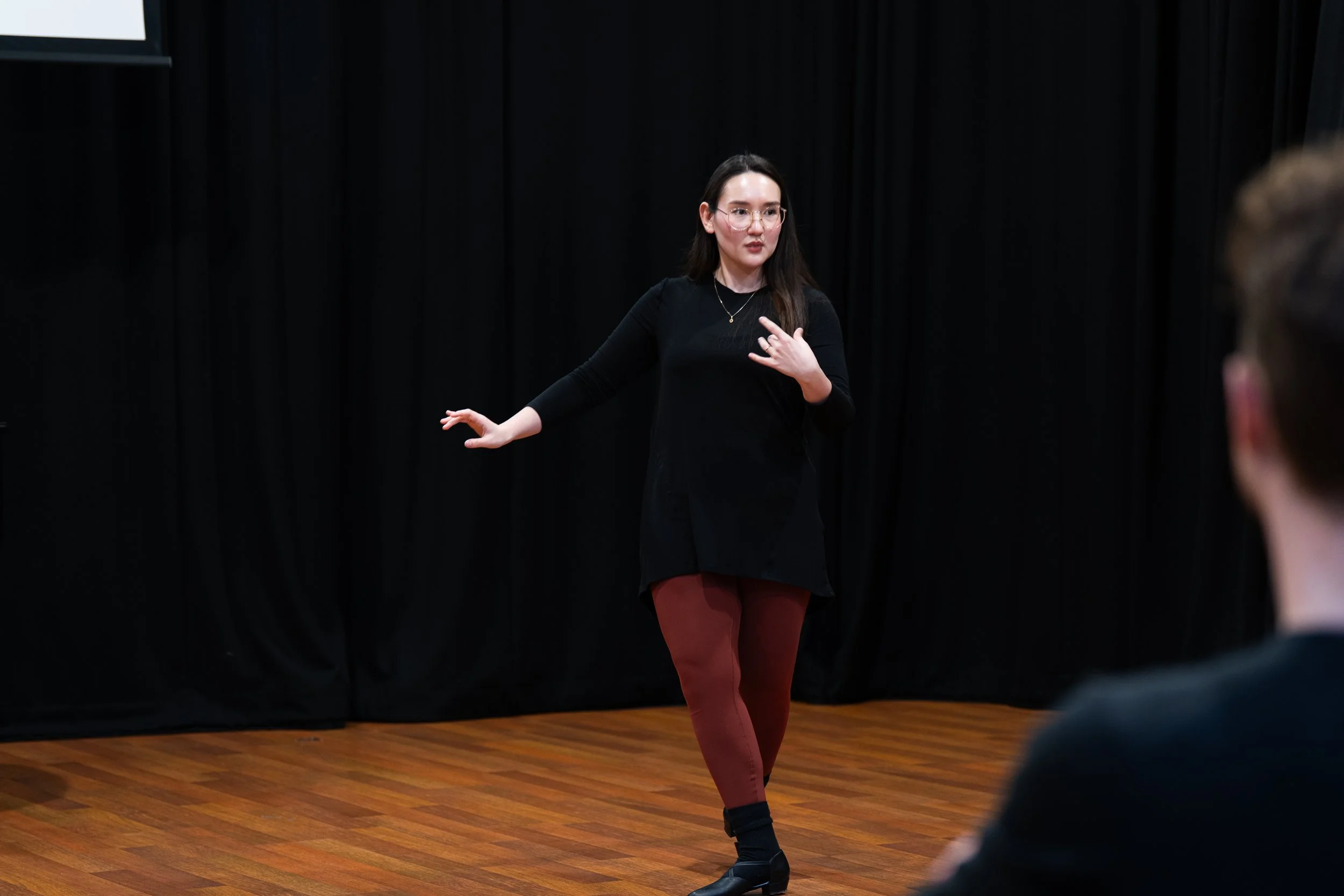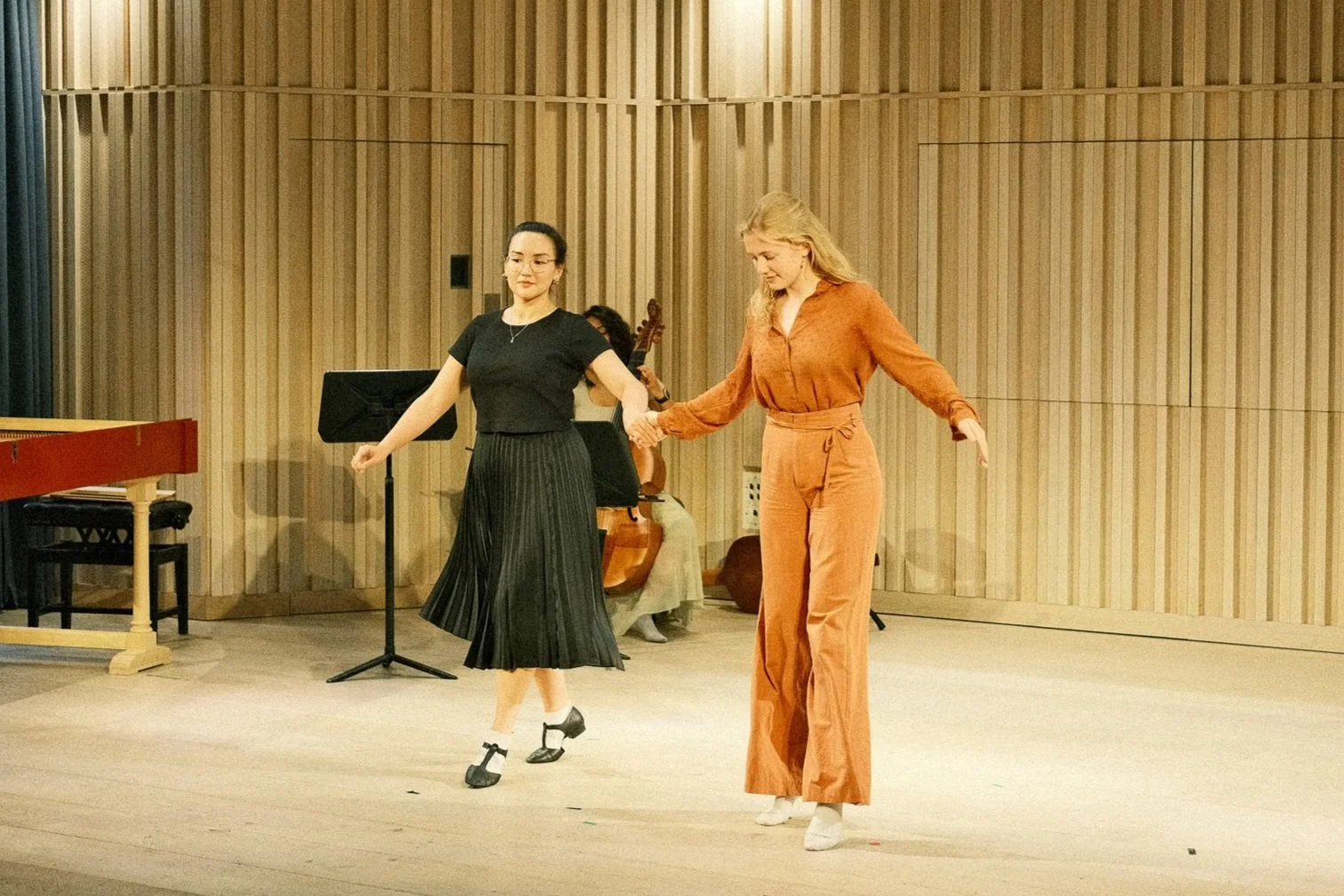
Historical Dance
I studied both ballet and piano from an early age, and after 13 years of training, I shifted my focus to solo piano.
My passion for movement and music, however, has never abated. At the Royal Academy of Music (RAM), I pursued studies in Historical Dance with Mary Collins, a researcher and dancer, where I not only learned period choreographies but also explored the deep historical connections between dance and music.
I have since performed and created choreographies for Cambridge Early Music (2023/24), the Royal Academy of Music (2024/25), Girton College Cambridge (2024), and the National Opera Studio (2025).
I have also delivered workshops and one-to-one coaching for singers and instrumentalists at leading institutions including the National Opera Studio, the Royal Academy of Music, and a range of specialist events across London.
In 2025, I was appointed to the faculty of Melofonetica’s Veneto Summer Programme, where I coach Baroque dance and gesture.
These sessions are designed to identify and explore the presence of dance forms in Early Music. The aim is to teach singers and instrumentalists how the nuances and character of movement informed much Early Music composition and how these embodied elements can be meaningfully reintegrated into today’s performance and interpretation.
↧ to watch
Importance
Each historical dance carries its own distinctive character, shaped by its rhythm, phrasing, and social or theatrical context. Composers of the Baroque and Classical periods chose these dances with great care, weaving their expressive qualities into the fabric of the music. For performers of the time, these references would have been immediately recognisable—guiding not only the tempo and articulation, but also shaping the phrasing, breath, text delivery, and overall emotional landscape of a piece.
While not all music from these periods was written to be danced to, the influence of dance was deeply embedded in the musical language. This embodied understanding—so familiar to musicians of the 17th and 18th centuries—has gradually faded over time. Reviving this knowledge allows us to reconnect with the original spirit of the repertoire, bringing a richer, more informed sense of movement, character, and vitality back into performance.

Media
Allemande for two dancers, choreographed and performed by Aya Robertson and Fernando Santiago dos Santos.
This is a selection from a full performance entitled Mysteries for the Modern Days, curated by Fernando and performed at the Royal Academy of Music alongside musicians from the Historical Performance Department.
